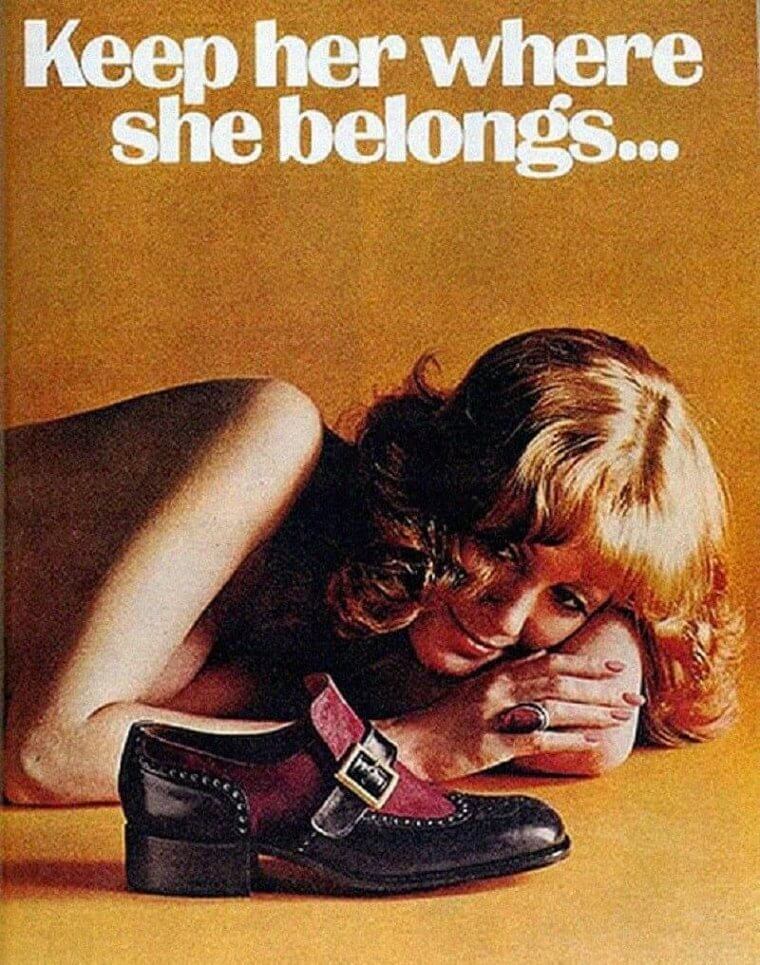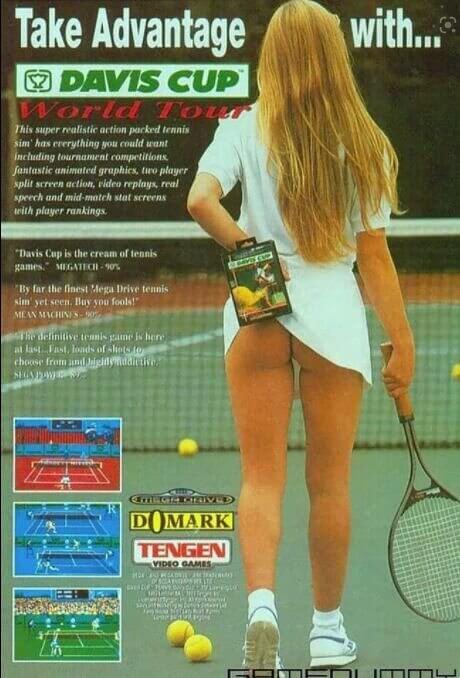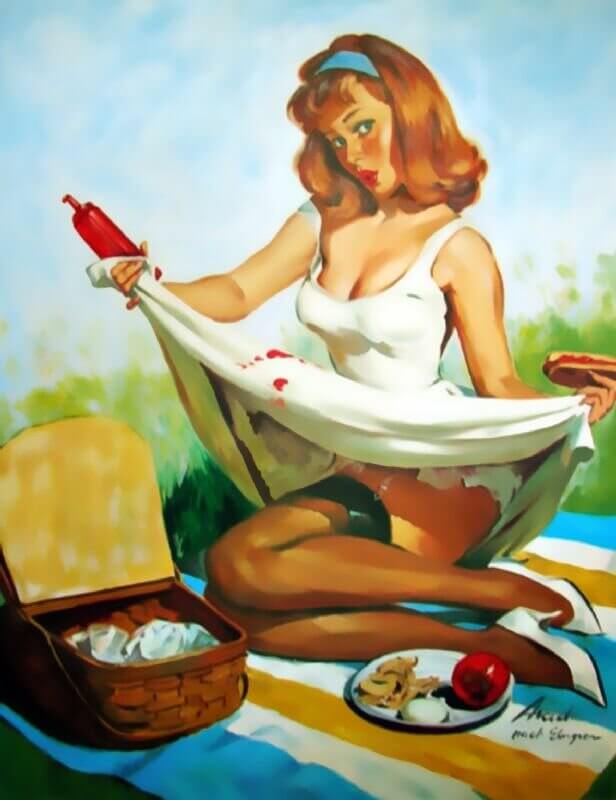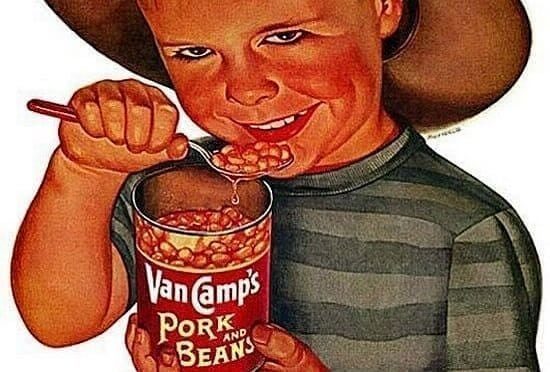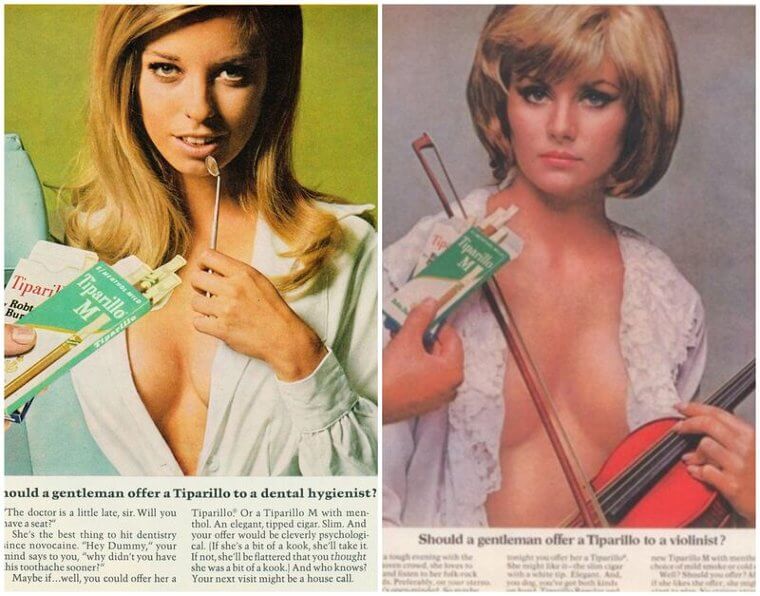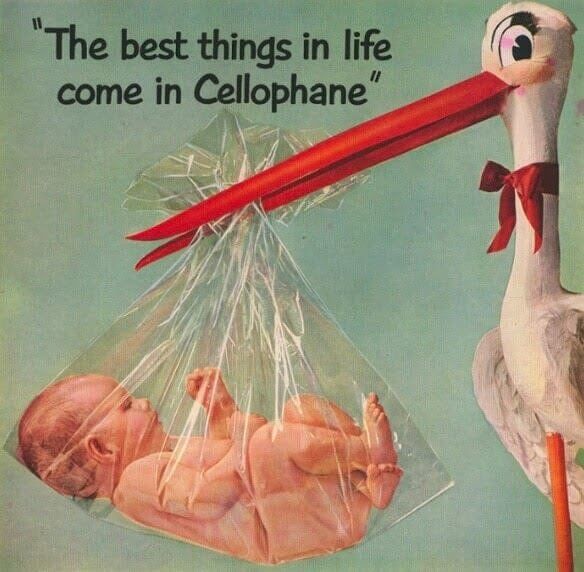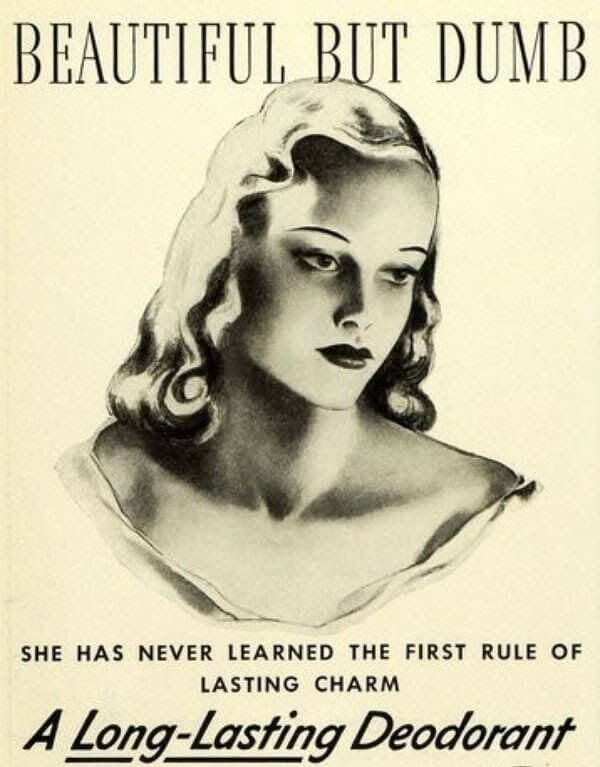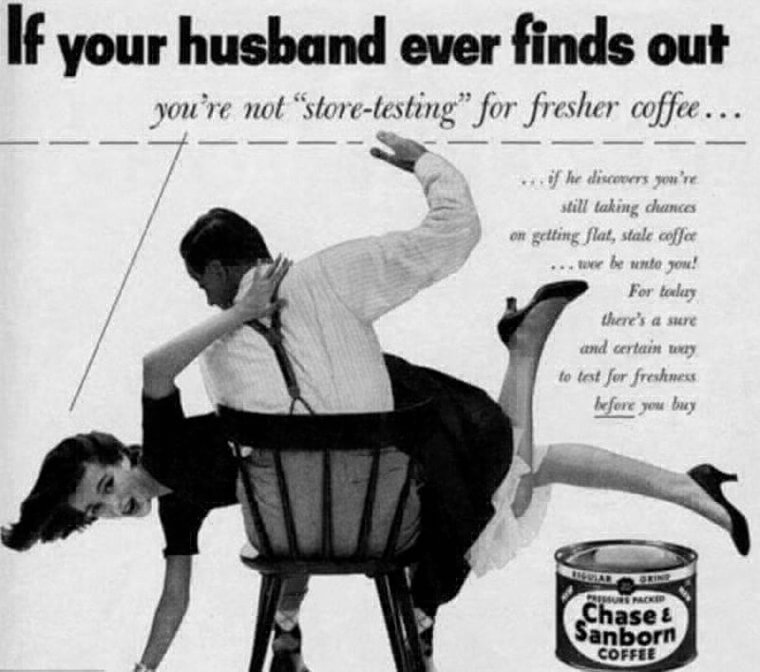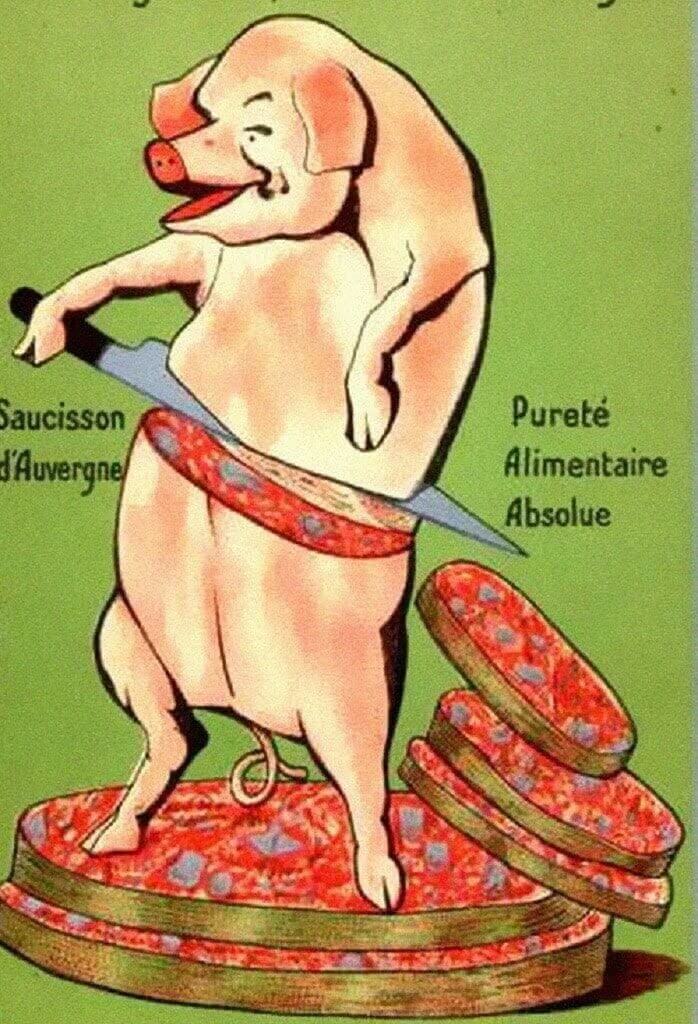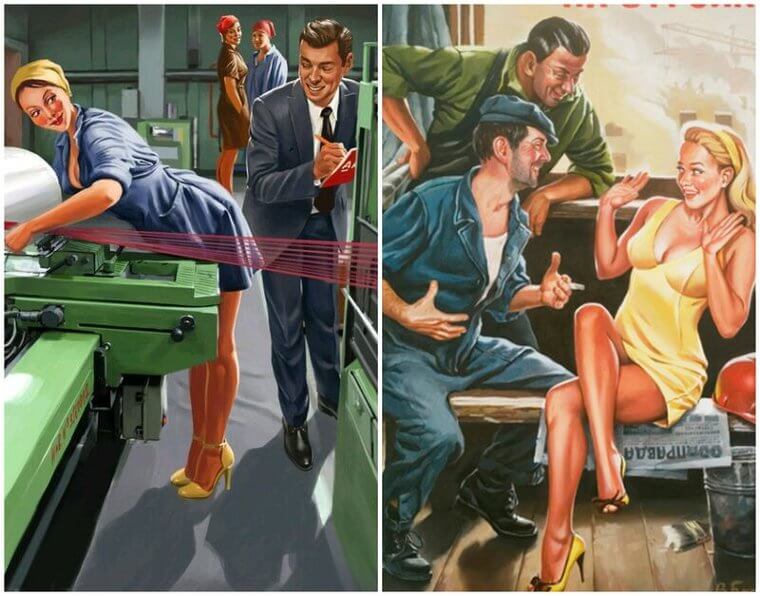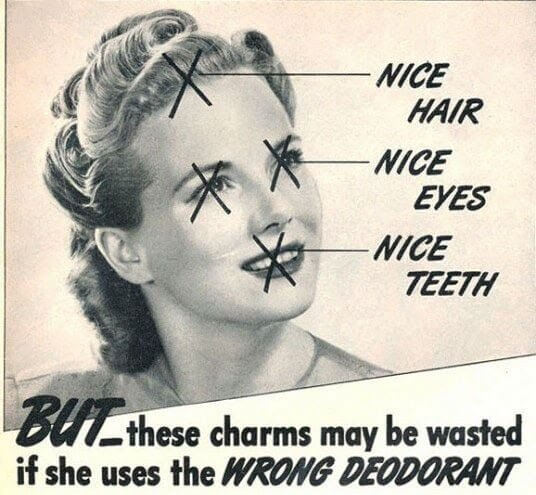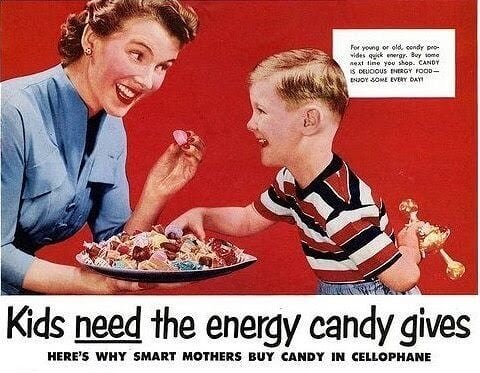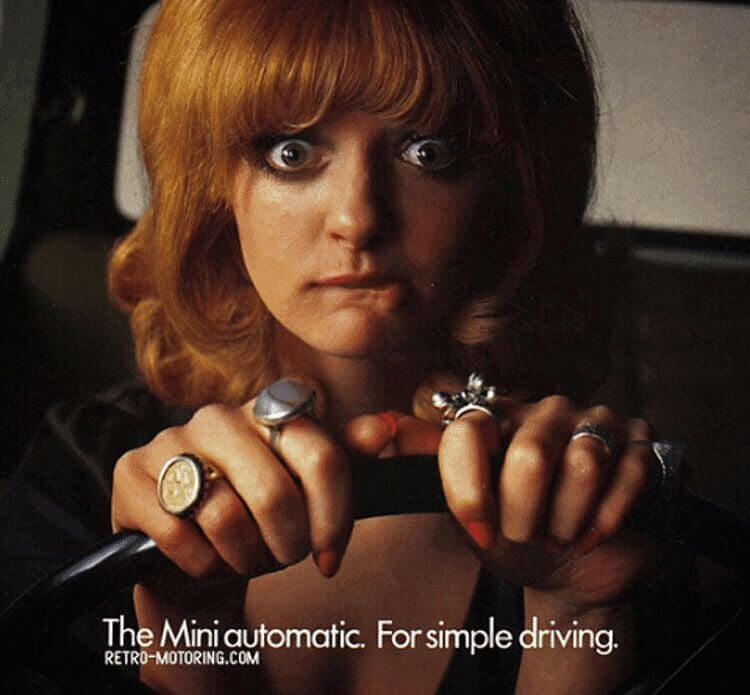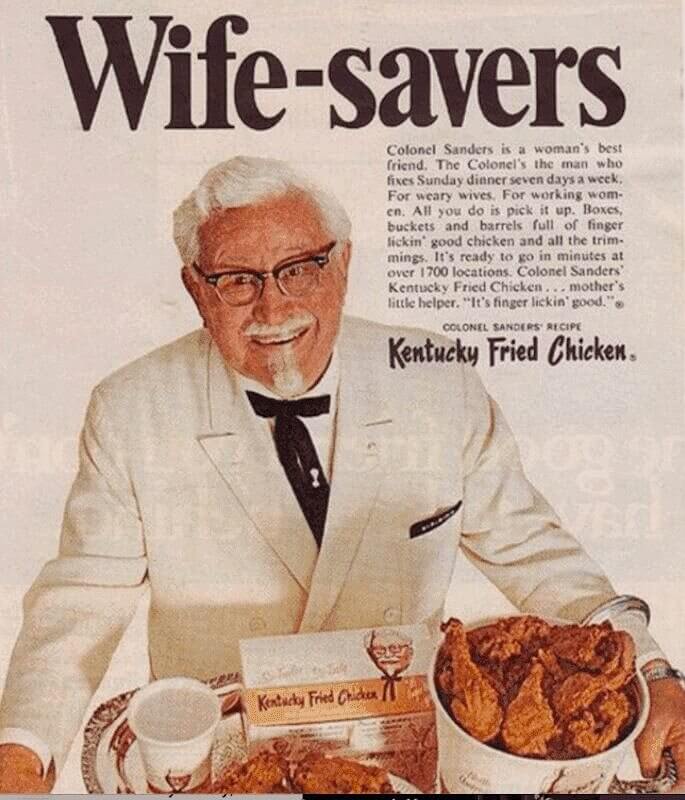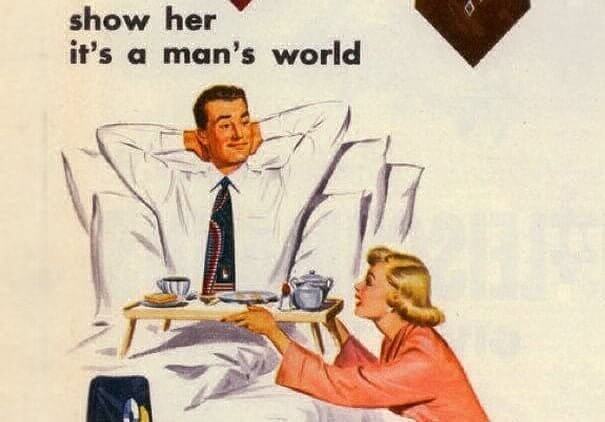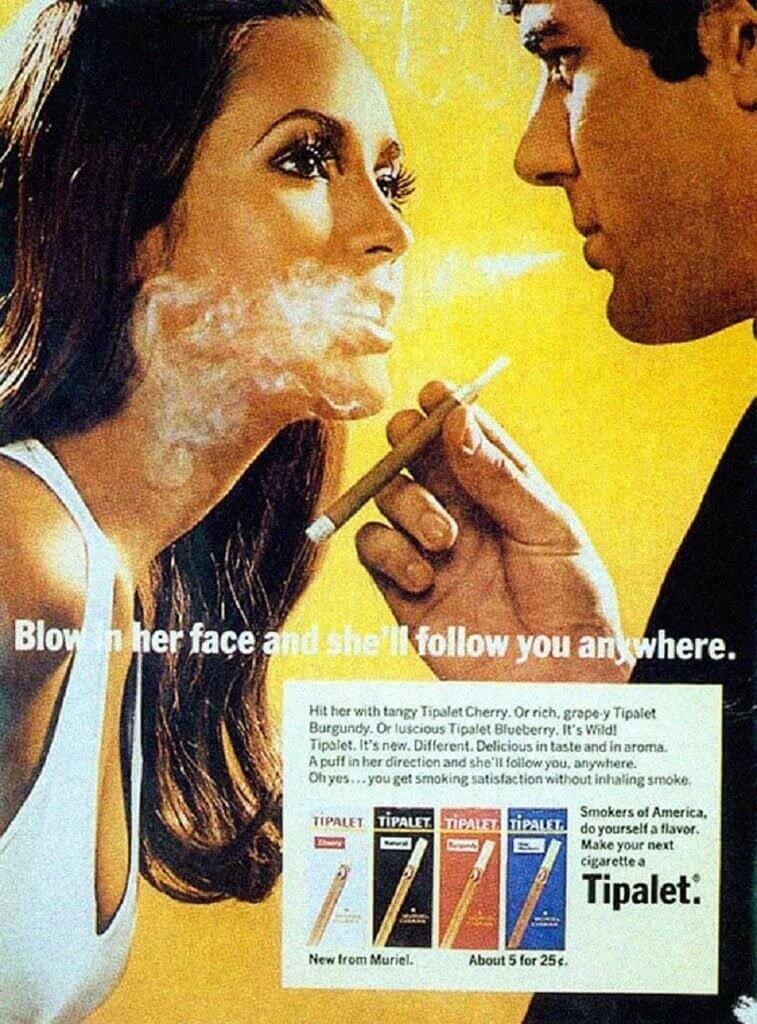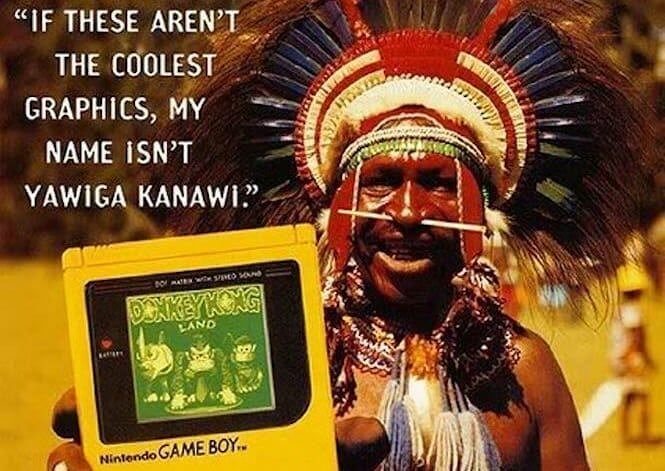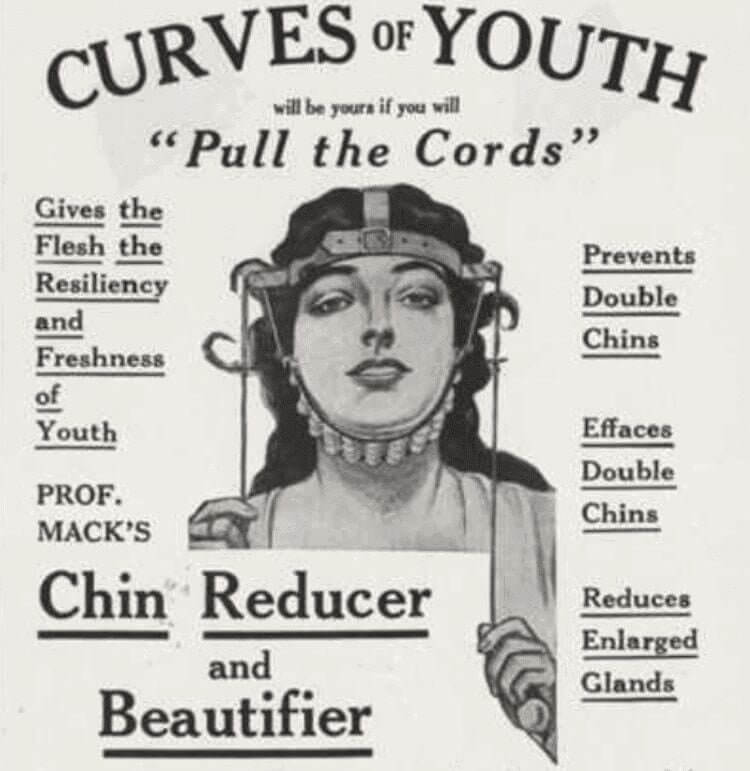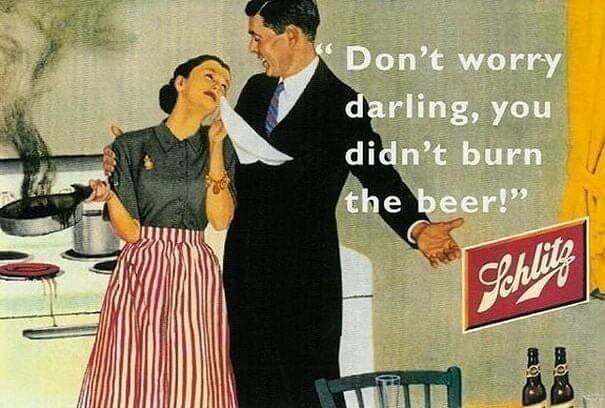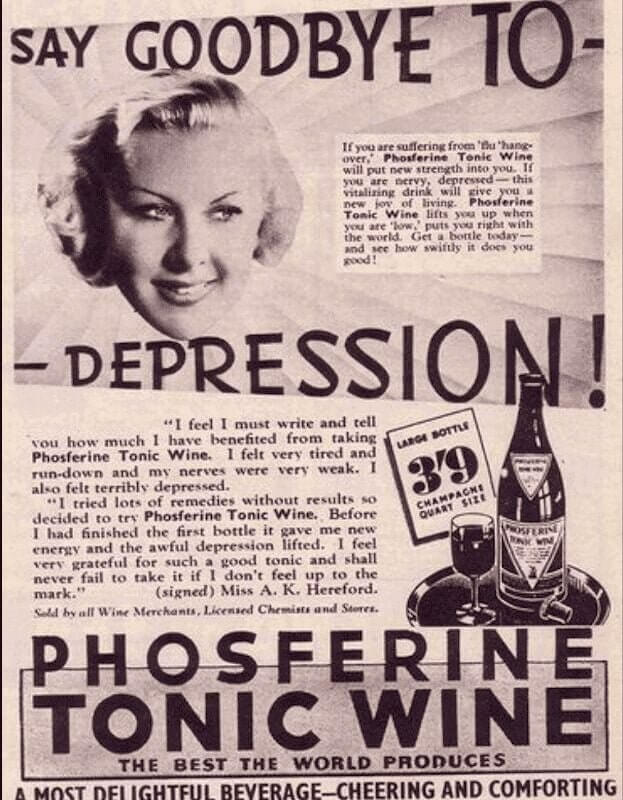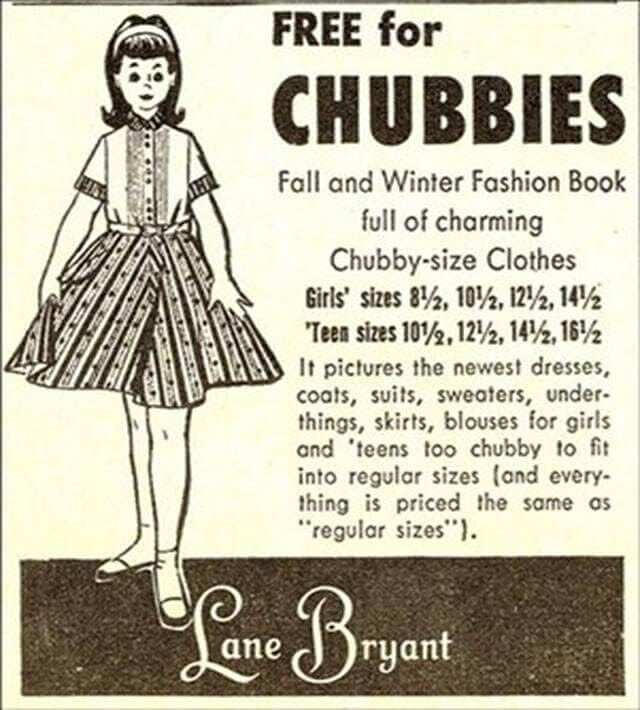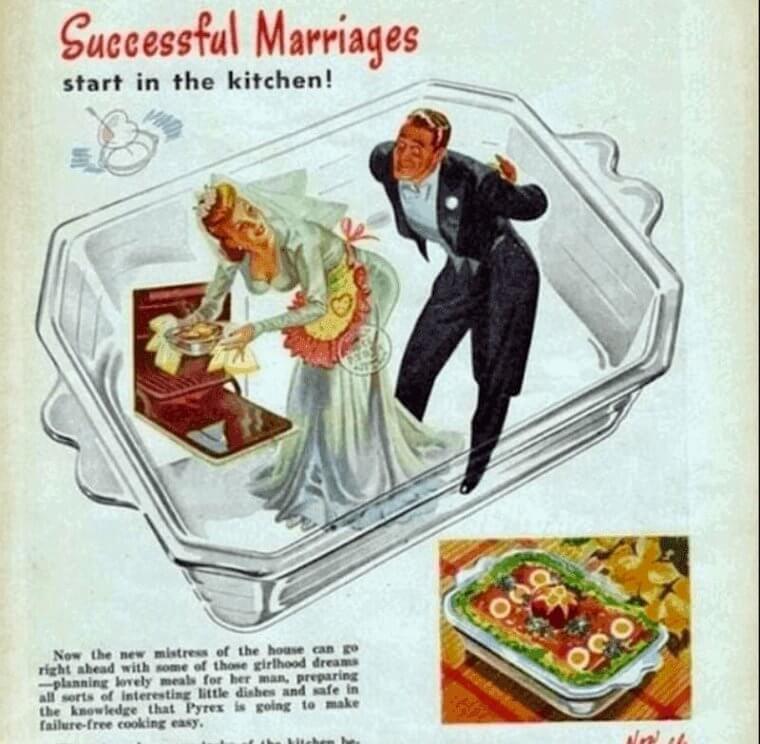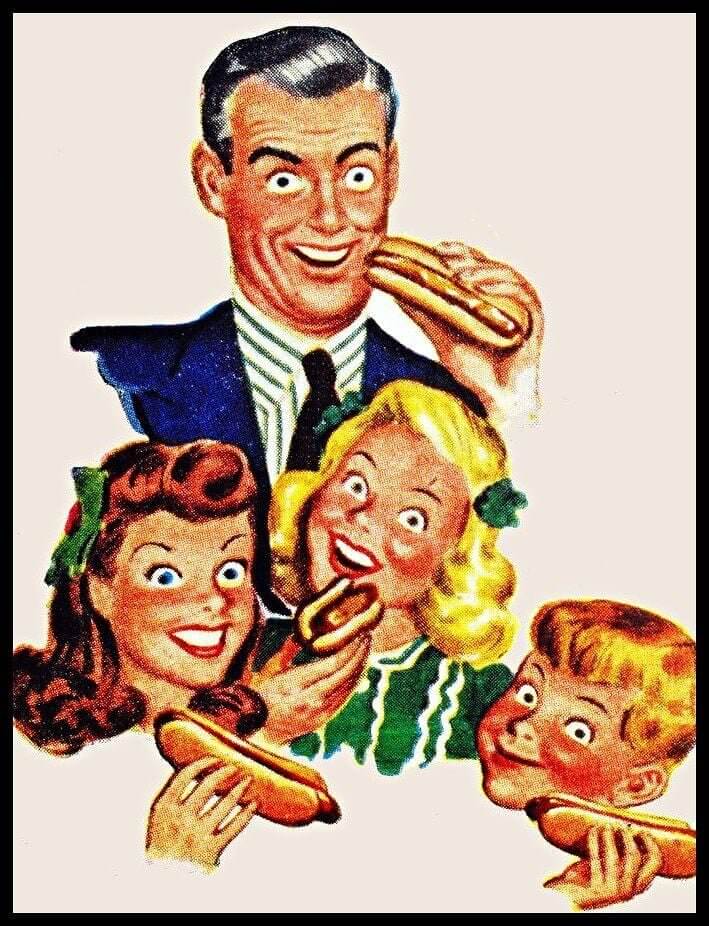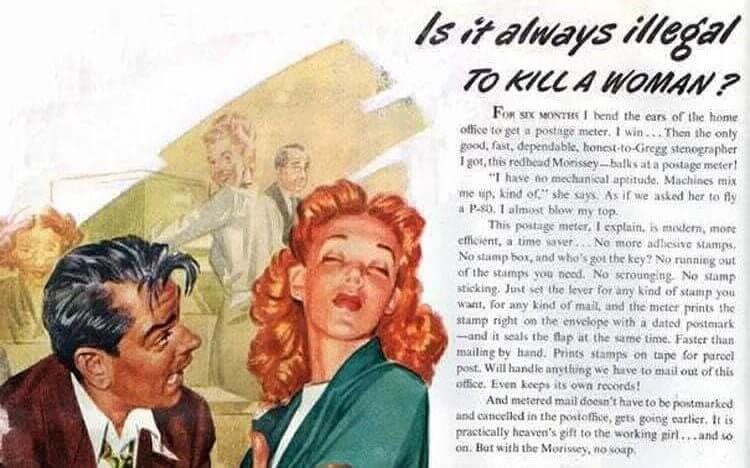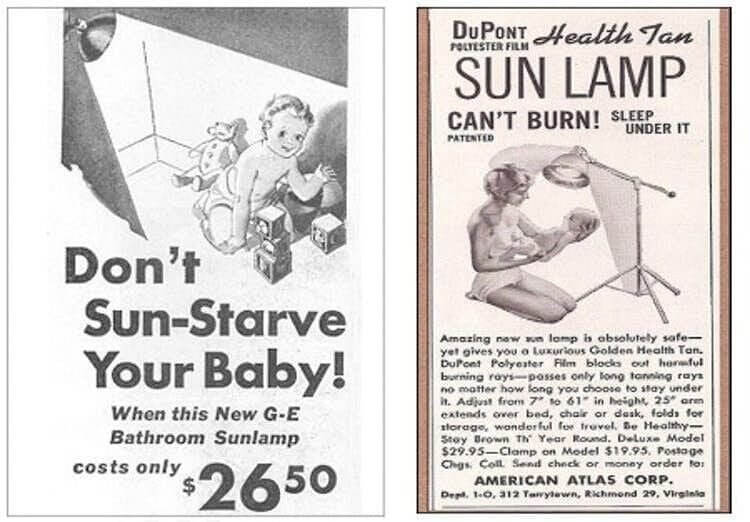When was the last time you saw an advertisement that made you cringe? Well, Some of the ads you'll be seeing here would never have been approved in this day and age. So, if you think that ads these days are nothing to write home about, brace yourselves, as next up we take a look at some old-fashioned ads that will make your skin crawl!
Keep Them at Your Feet
If there was ever an ad that exemplified misogynistic thinking, this would be it. The theory behind this ad was to probably show a woman who was so impressed by the man’s choice of shoe that she could not take her eyes off of it. While that is all fine and good (although it also shows a lack of creativity), the tagline is blatantly sexist.
The tagline “Keep her where she belongs” has absolutely nothing to do with selling the product so one can only assume that it was added to imply that women should always be at a man’s feet. Though we have certainly come a long way since these types of ads were commonplace, we still have a long way to go.
Balls
Tennis balls people!! You would think this is an ad for a naughty club, or maybe a "all-nude-tennis" game. But no! It's an ad for a computer game. A computer game that is a tennis game. A tennis game. In a computer. In the 1980's.
What should one expect when he starts playing this game with 1980's graphic capabilities? Why would you use this image to promote a tennis computer game?
Picnic, Gil Style
This image is one of many illustrations done by Gil Elvgren. He was known not for his arts, but for his pin-up creations. He could paint a pin-up of women in everyday situations, and make them look "inviting".
It's obvious that Elvgrens' works would never have been accepted these days, as they were all done for men's pleasure. We don't know if he ever regretted being famous for this and not for his art, but what's done is done.
Stokely’s Van Camp’s Canned Pork and Beans; 1952
This ad was okay but for one major flaw; the kid's expression. You can say it is sinister, the young boy looks like the kind of person to sneak up when you’re sleeping and do something evil. This looks like a subtle threat that tells you “fail to buy Stokely’s Van Camp’s pork and beans and see what happens to you.”
Well, we might stretch it to say it’s a veiled threat. However, the artist messed this drawing with that cold expression on the boy’s face, though it’s likely they did not mean to create a chilling effect on the picture.
Smoking (Hot)
Seriously? Okay, maybe we don't know what we're talking about and these advertisements worked. Tiparillo created ads for young smokers and women smokers. Their main tagline was "Should a gentleman offer a lady a Tiparillo?"
And they used that tagline in almost every profession that women can be found in. The problem was that they showed the women, as you can see, hot and sexy - in every profession.
Ready for Delivery
The most successful advertising campaigns usually involve a slogan that is easy for consumers to remember. This company tweaked the saying “the best things in life are free” to read “the best things in life come in Cellophane”. Kudos to them for being creative, right? Well, the creativity went a bit too far.
Instead of using their product to wrap a lovely gift basket or a box of chocolates, they decided that wrapping a baby, in plastic mind you, would be a huge hit. While the stork is a cute touch it seems as though the ad should have a disclaimer that reads “This product is not intended for the wrapping of humans.”
Healthy Eating
People back in the '50s and '60s really didn't have a clue, did they... I could understand the original thought behind this weird ad, but still, people.... there is no way this ad could ever pass through today.
I wonder where these kids are today, and if they ever look back in horror on this image. On the other hand, they could have it enlarged and on canvas in the middle of their living room.
How to Catch a Man For Dummies
As you can see, many of the advertisements during the 1930s, '40s, and '50s were geared towards women in hopes that their scare tactics would increase sales. This vintage ad doesn’t mince words when it comes to their opinion of women and their level of intelligence.
The deodorant ad is basically saying that this beauty is too stupid to realize that she should use their product, implying that anyone who does use it has to be more intelligent. In all actuality, the statement “Beautiful but dumb” is an underlying way of saying that women, in general, are too dumb to think for themselves and will buy whatever they are told to.
Wife Spanking; 1950s
This image was inspired by the trend in the 1950s. Men could spank their wives and an opinion column in the dailymail.co.uk website showed how common this was. Four men who interviewed for the piece all agree that it was okay to beat wives when they make mistakes.
In this picture, the husband is spanking his wife because she bought stale coffee. This ad plays to the narration of the time that women are second-class citizens.
How the French Do It
While the United States has certainly proven to produce some cringe-worthy ads, they simply cannot compare to the French. Though the French tend to be a bit more forward-thinking when it comes to gender roles, their respect for animals is lacking as proven in this next ad.
This graphic ad’s purpose is to sell fresh sausage by displaying a pig butchering himself and being happy about it. Not only is the ad far from appetizing, but it also raises the question as to whether or not the French treat their animals ethically. With organizations such as PETA, this marketing campaign would create a ton of backlash in this day and age.
Child Endangerment
How this ad campaign made it to print is beyond us. Understandably, the creative minds behind the marketing schemes can at times get blocked, so it is imperative to run ideas by your colleagues to ensure that they make sense. Obviously, this was not done, because this ad makes no sense at all.
Today, this ad suggesting a baby shave itself would receive a boatload of backlash. Aside from the fact that a child has no need for a razor, the repercussions of handing a baby a sharp object are unimaginable. Even an inexperienced person knows that!
Don’t Strain Your Brain
Though new products come and go every day, there have been quite a few that have stood the test of time. Granted, they may have had to make adjustments to their marketing strategies and branding, even so, those products still remain staples in households across the world. Interestingly enough, Coca-Cola’s initial advertising campaign has completely changed its game.
These days, Coca-Cola is one of the most well-known brands around, even so, when they started out in the 1890s, they marketed their product as a “Brain Tonic”. As you can see from the ad, they claimed the soda could relieve headaches and cure mental and physical exhaustion.
Pin-Up(ski)
This is the Russian version of pinup-girls posters. These posters were issued by the central government local party representative. And they were issued to garages and other places Americans would put pinup girls.
The difference is, obviously, that these are not photographs, but illustrations. And when in Soviet Russia, always connect everything with industry workers. Even pinup girls.
Mr. Leggs Floors Tiger Lady; 1960s
OMG! This is sooo wrong on so many levels. The ad copy implies that the pants were so hot, they floored a tiger lady. The graphically violent ad sends the wrong message about what is acceptable in society.
See the miserable, glaring face of tiger lady. How does a consumer connect that with slacks? They wanted to create a lady killer type of ad but this is more on the violence against women category. Considering that the 60s was a time when women were fighting for their rights, this ad even seems to tell men that Mr. Leggs pants would help keep the woman down. Gross.
Wasted Charms
No one likes to smell bad so it is a safe assumption that the majority of the population wears deodorant. And because deodorant is one of those products where you become loyal to a brand when you find what works, those companies thrive on repeat customers. Executives have come to realize this over the last few decades and have found that they can cut their advertising budget. Now, back in the day, deodorant was a competitive market so things were done a bit differently.
Because of the steep competition, deodorant companies chose tactics in their advertising that targeted women and bolstered their insecurities. In this ad, they are sure to point out that no matter how beautiful and charming you were, if you did not smell nice you were out of the running.
Candy Coated Advertising
Everyone loves candy, however, we can all agree that it should be eaten in moderation. Parents are acutely aware of the adverse side effects their children experience when on a sugar high. While sugar is a tasty treat, when young children consume it, they experience a huge spike in energy followed by a sudden crash.
It is apparent from this ad that the company was well aware of the energy boost candy provides as well. Instead of hiding it from consumers, they capitalized on it by making mothers feel as though they needed to feed their children sweets to give them more energy. They even went so far as to point out that a “smart mother” would buy this product.
Cars Even a Woman Could Drive
Like appliances, cars are also a product that is advertised to both men and women in completely different ways. Traditionally, men would be the decision-maker when the family purchased a new vehicle, even so, women had certain requirements to make their lives easier. Trunk space for groceries, spacious and safe for the children, and, of course, gas mileage to adhere to the family budget.
By the 1960s, women were becoming more independent and many households were choosing to have two cars. This ad for the Mini automatic, though it looks to be geared towards women, is actually geared towards their husbands. By showing a woman who looks nervous and then stating the car is simple to use, men would be more likely to be concerned that their wives couldn’t handle a normal-sized car.
KFC - A Woman’s Best Friend
Kentucky Fried Chicken opened their doors back in the day when women were expected to stay home, take care of the family, and have a hot homemade dinner on the table when their husbands came home from work. Because fast food was a relatively new concept, KFC targeted their advertising campaign towards exhausted housewives.
Though the ad does play into the stereotype that women should be providing a meal for their men, the copy does seem to sympathize with the difficulty of their role in the household. Saying that Colonel Sanders is a “woman’s best friend” and mentioning “weary wives and working women” suggests that he understands their circumstances and wants to help. It must have worked because KFC has been extremely successful since its inception.
Man’s World; 1950s
When the ad is titled it’s a man’s world, you can guess where it is going. This ad for Van Heusen’s ties took a strange approach. The man is smartly dressed in a tie and sits on the bed which does not really make sense because who goes to bed in a tie? Then it goes downhill from here. A housewife on her knees is serving the man dutifully, placing a wonderful breakfast on his lap.
Who doesn’t love breakfast in bed? However, the ad, like some already on this list portrays women as second-class people.
Advertising Advice
While it seems absurd to take advice from a marketing campaign, there was no shortage of ads that doled it out. This ad offered up some dating advice all the while promoting smoking and misogynistic attitudes. A real bang for the company’s buck so to speak.
Though the tagline confidently states if you “blow in her face she will follow you anywhere”, this is obviously not sound advice. While the ad suggests that women enjoy smoke being blown in their face and that they find it wildly attractive, rest assured they will most likely find it a very rude gesture.
Tribal Chief; 1998
Nintendo was the bomb in console gaming. Their handheld gaming product known as the Game Boy Color was a smash hit with legendary games such as Pokemon, Donkey Kong, and Legend of Zelda.
The ability to buy colors such as teal, berry, kiwi. Grape, purple, dandelion, and clear transparent options further sweetened the deal. The picture of a tribal chief holding a game boy is the oddity in the ad.
It Hurts to Be Pretty
Let’s face it, advertisers have been making promises for over a century saying that their product will make women look younger, thinner, and prettier. It’s a multi-billion dollar industry for crying out loud. It's doubtful that this will ever change but thankfully the products themselves have vastly improved.
While this 1890 ad is promoting a chin reducer and beautifier, the contraption actually looks like some kind of torture device from medieval times. The catchphrase “Curves of Youth” targets aging women promising them that they can, once again, look the way they did in their younger years. Although this wouldn’t be a big seller in today’s world, the same message is sent with adverts for plastic surgery.
Schlitz Beer; 1950
This ad was probably meant to come out funny, and in the 50s, maybe it was. The lady in the picture is a housewife cooking. She seems to have ruined the food as black smoke rises from the pan in her hand. She is obviously disappointed, but the husband puts an arm around her and consoles her that while the food is ruined, they still have the beer.
This picture plays to the stereotypes of the 50s where the ideal female was groomed to be a pious housewife while the man was the breadwinner. The man was also the one who controlled everything so that it seems condescending that instead of being angry; he applauds that the beer is not spoilt.
Made Just for You
Advertisers have profited off of the differences between men and women for decades, however, they normally focus on the sex's wants and needs as opposed to their physical attributes. This began to change in the 1960s. Women were beginning to find their voice so the companies that noticed attempted to market differently in an attempt to win them over.
The problem was that men were still making the decisions. This 1965 ad selling a girl-sized pen for a girl-sized hand did make a feeble attempt to seem as though they backed the women’s movement, even so, the underlying message of the ad is that women are smaller and therefore cannot handle a man-sized writing utensil.
A Cure in a Bottle
There is nothing like relaxing with a glass of wine after a long hard day, right? While a glass of wine can be a stress-reliever, it is not recommended for those who are battling depression as it can act as a downer. These are all things we know today, however, in the 1940s and 50s, depression was rarely discussed.
Though depression was rarely discussed, many companies included the issue in their ad campaigns announcing they had found the cure. This ad, in particular, claimed that their wine was not only a cure for depression but also the flu and hangovers. While the hair of the dog may bring you some cheer, it certainly isn’t a remedy.
Targeted Advertising
Advertisers get the most bang for their buck by gearing their ads towards certain demographics. While this has proven to increase sales, there are some marketing campaigns that have proven to be insensitive. Now, in this day and age with social media, insensitive ads are quickly called out causing the companies to take immediate action to appease their consumers. It wasn’t this way in the 1960s, however.
Lane Bryant put out an ad offering a free fashion catalog for girls size 8.5 to 14.5 and teens size 10.5 to 16.5, however, the actual word they used to describe them was chubbies. Though they were surely trying to be inclusive, in all actuality, their wording was offensive and wrong.
Pyrex Offers Wedded Bliss
When a couple weds they do so with the hopes that their marriage will last forever and apparently the famous brand Pyrex knew that. Now Pyrex is a reputable brand and has been around forever but their message in this vintage ad makes some promises they may not be able to keep.
The tag line “Successful marriages start in the kitchen” implies that if a newly married couple uses their product they will surely stay together. It goes on further to say that “Pyrex is going to make failure-free cooking easy” to imply that marriages will certainly fail if the wife’s cooking fails. Way to put on the pressure Pyrex.
Hot Dogs!
Here's your average hotdog advertisement you would see at football games, baseball, and any other sports where masses of people would join together to buy hotdogs.
The hot dog would be the go-to food for people who couldn't afford more than a hot dog, that's why during the great depression you would see hundreds of advertisements pushing the hot dog as an all-time family favorite.
Postage Meter; 1947
A woman seems to be having enough of what the salesman is trying to sell. The story in the ad suggests the woman was reluctant to buy the contraption because she thought it would be hard to use. This belittles the capability of women. Then the salesman somehow convinced her to try it and she loved the results. This seems to show that women do not know what is good for them unless men tell them what to do.
The ad is for a postage meter but the headline asks when it is fine to kill a woman. This is a joke among couples but feels out of place and in bad taste when talking about postage meters.
Save Your Sun-Starved Tot
When deciding on a demographic to target, advertising agencies thrive on products made for children. Why, you ask? Because parents are constantly in search of the next best thing to ensure their children are happy and healthy.
While it's encouraging that most parents are willing to sacrifice their hard-earned money for the benefit of their children, some products may do more harm than good. This 1930s ad for a sun lamp suggests parents allow their infants to sleep under its rays. The wording even suggests parents are starving their children of something vital when in all actuality the product could be quite damaging to an infant’s skin. Crazy, right?

